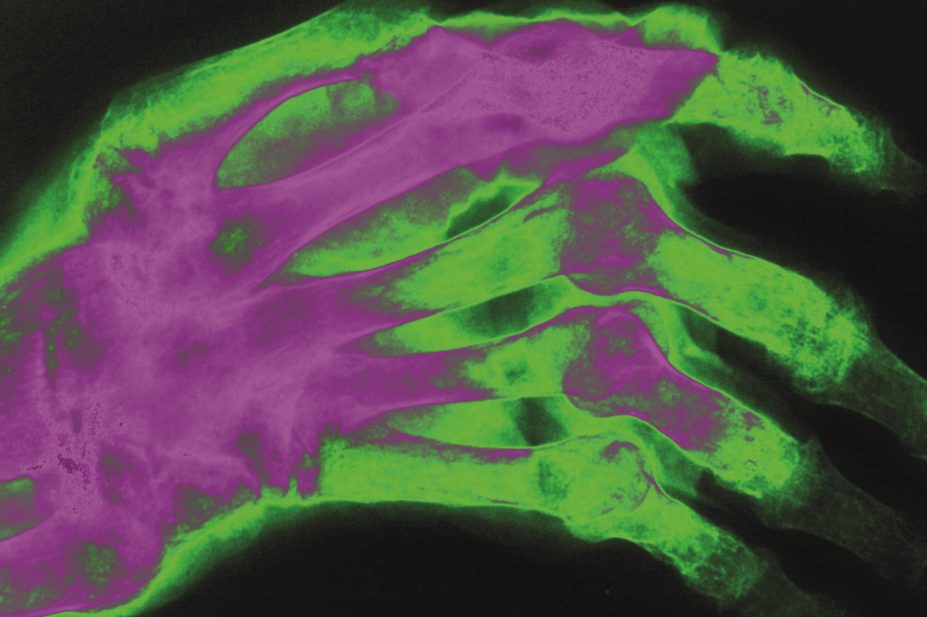
BSIP SA / Alamy
Evidence to support intensive treatment with disease-modifying anti-rheumatic drugs (DMARDs) when patients are first diagnosed with rheumatoid arthritis has been presented at the Annual European Congress of Rheumatology (EULAR) in Rome on 10 June 2014.
Rheumatoid arthritis is an autoimmune disease that causes chronic inflammation in the joints. DMARDs help to prevent damage caused to patients’ bones, tendons, ligaments and cartilage when the immune system attacks the joints.
Two separate studies suggest it may be beneficial to intensify DMARD therapy when patients are first diagnosed. In the first study[1]
, patients recently diagnosed with rheumatoid arthritis (n=281) were given either the DMARD methotrexate alone, or methotrexate in combination with the DMARDs sulfasalazine and hydroxychloroquine. Patients’ physical mobility was measured using a health assessment questionnaire (HAQ) every three months. After two years, patients who received triple therapy were more physically mobile than patients who received methotrexate alone (median HAQ score 0.25 and 0.63, respectively; P<0.05).
“Our data showed an earlier decrease in disease severity and improvements in functional ability in the combination-therapy groups compared with monotherapy, adding to the evidence base for an intensive treatment approach early on,” says lead author Angelique Weel from the department of rheumatology, Maasstad Hospital, Netherlands.
Disease progression and severity, measured using X-rays of joints and disease activity scores, were no different between the groups. However, more patients who received methotrexate alone later required treatment with a biologic DMARD.
A second study[2]
showed that patients with moderate disease may benefit from early treatment with biologic DMARDs. Such treatment may reduce the risk of serious damage to the joints, which in turn can reduce the need for surgery. The study analysed patients’ (n=2,044) treatment in the first five years after diagnosis with rheumatoid arthritis.
Patients with “low-moderate”, “high-moderate”, and “high” disease activity scores all had a large increased risk of major joint surgery (hazard ratios 2.07, 2.16 and 2.48, respectively) in the first five years after the onset of rheumatoid arthritis, indicating that patients with moderate disease may also require intense treatment to avoid damage to the joints.
“Our data provide an argument for updating existing disease activity cut-off points to allow rheumatoid arthritis patients with moderate disease activity to receive a biological agent in addition to conventional DMARDs,” says lead author Elena Nikiphorou from the rheumatology department, St Albans City Hospital, Hertfordshire.
The National Institute for Health and Care Excellence recommends that patients newly diagnosed with active rheumatoid arthritis should be offered a combination of DMARDs (including methotrexate and at least one other DMARD, plus short-term glucocorticoids) as first-line treatment as soon as possible, ideally within three months of the onset of persistent symptoms.
References
[1] Kuijper T, Luime J, de Jong P et al. Tapering DMARDS in the TREACH trial – flare rates, sustained remission and radiological progression. Annual European Congress of Rheumatology 2015. 10 June 2015.
[2] Nikiphorou E, Carpenter L, Norton S et al. Different levels of moderate disease in rheumatoid arthritis (RA) are associated with varying risk for joint destruction and failure. Time to update DAS cut-offs for biologic DMARD use? Annual European Congress of Rheumatology 2015. 10 June 2015.


